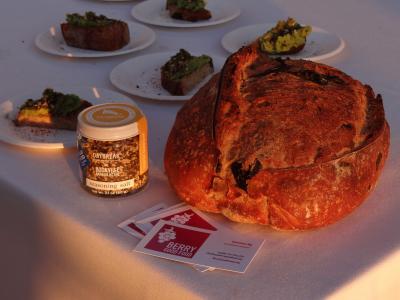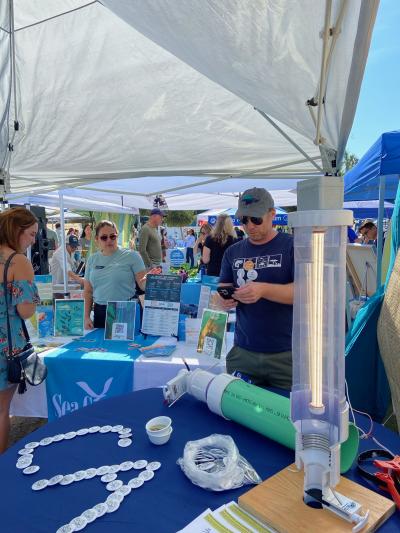Researchers, growers and seaweed enthusiasts gathered at Scripps Institution of Oceanography and Waterfront Park in San Diego in early November to celebrate all things nori, dulse, kombu, wakame and more.
The 4th Annual California Seaweed Festival, originally launched in 2020 with the help of a grant from California Sea Grant, drew over 50 vendors. Highlights included a sold-out evening Seaweed Speakeasy that featured marine-inspired culinary treats followed by a day of informational sessions, panels and inventive seaweed products.

At the Speakeasy, local chefs, mixologists and artisans shared innovative seaweed-inspired dishes and beverages. Guests sampled bites of local San Diego Sea Urchin uni with black garlic yum-yum sauce and ogo on a nori chicharron; furikake (a Japanese rice seasoning that contains seaweed) chocolate chip cookies, and avocado toast on kelp sourdough. At informational sessions, visitors learned about kelp forest protection, seaweed “seed banking”, and funding opportunities for sustainable seaweed aquaculture in California.
While most Americans will recognize sushi wrapped with thin sheets of dried seaweed or crispy seaweed squares tucked into the side of a bowl of steaming ramen, this valuable sea vegetable is also widely used in cosmetics, animal feed, candies, salad dressings and to thicken products like ice cream and yogurt. But only handful of small producers in California, Alaska and New England grow seaweed domestically. The vast majority of seaweed used in the U.S. is imported from Asia. This leaves the U.S. with an import-export deficit of more than $33 million.
“Our oceans are productive, well-managed and offer a wide variety of healthy, sustainable foods — many of which, like seaweeds, are under-appreciated despite their culinary versatility, says California Sea Grant extension specialist Theresa Talley.

It's a product ripe for highly sustainable land-based farming. What’s missing are the hatchery facilities needed to launch a robust domestic industry. A 2022 grant from the National Oceanic and Atmospheric Administration and National Sea Grant is helping to change that. Researchers from California Sea Grant and Moss Landing Marine Laboratories also showed off their Core-Lit Apparatus for Seaweed Hatcheries (CLASH) system at the festival. While still a prototype, the system has the potential to produce seedstock farmers that will allow farmers to grow high-value seaweeds in land-based tanks nearly anywhere in the U.S.
About California Sea Grant
NOAA’s California Sea Grant College Program funds marine research, education and outreach throughout California. Headquartered at Scripps Institution of Oceanography at the University of California San Diego, California Sea Grant is one of 34 Sea Grant programs in the National Oceanic and Atmospheric Administration (NOAA), U.S. Department of Commerce.